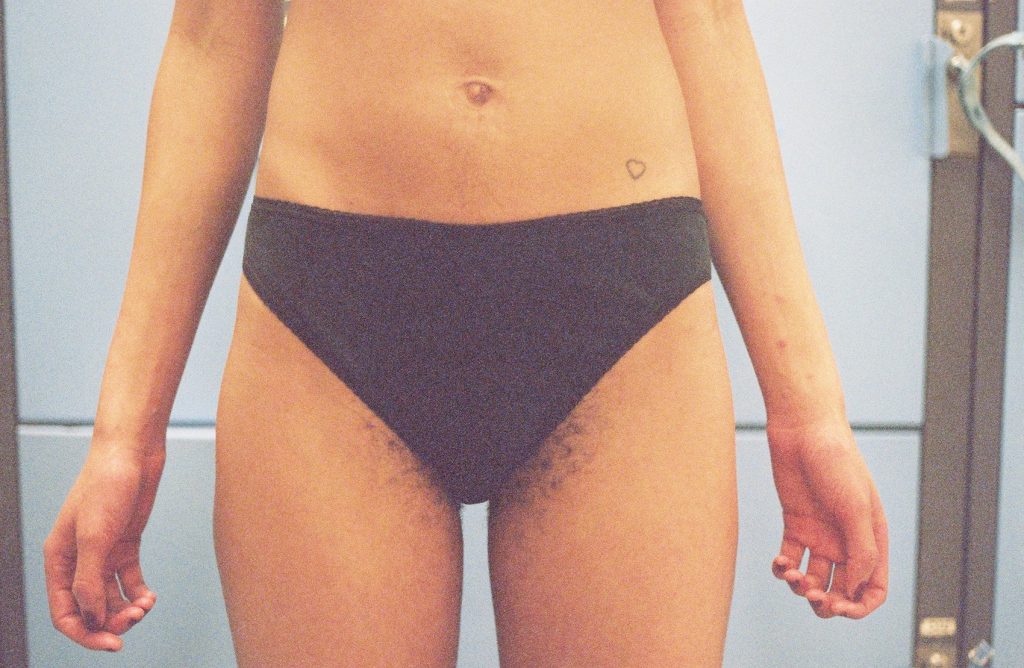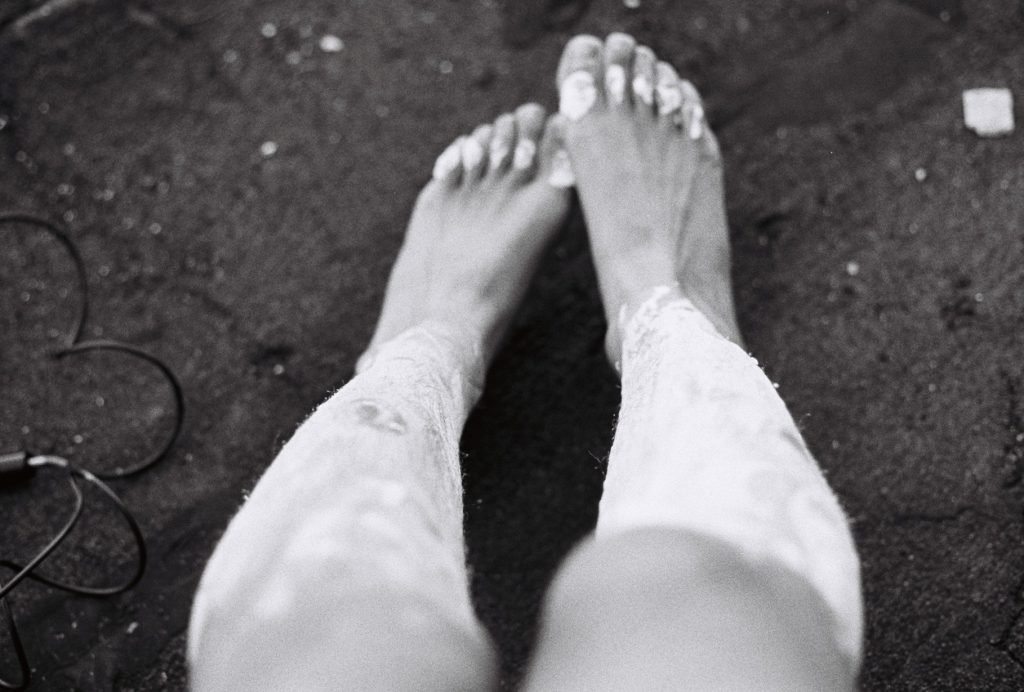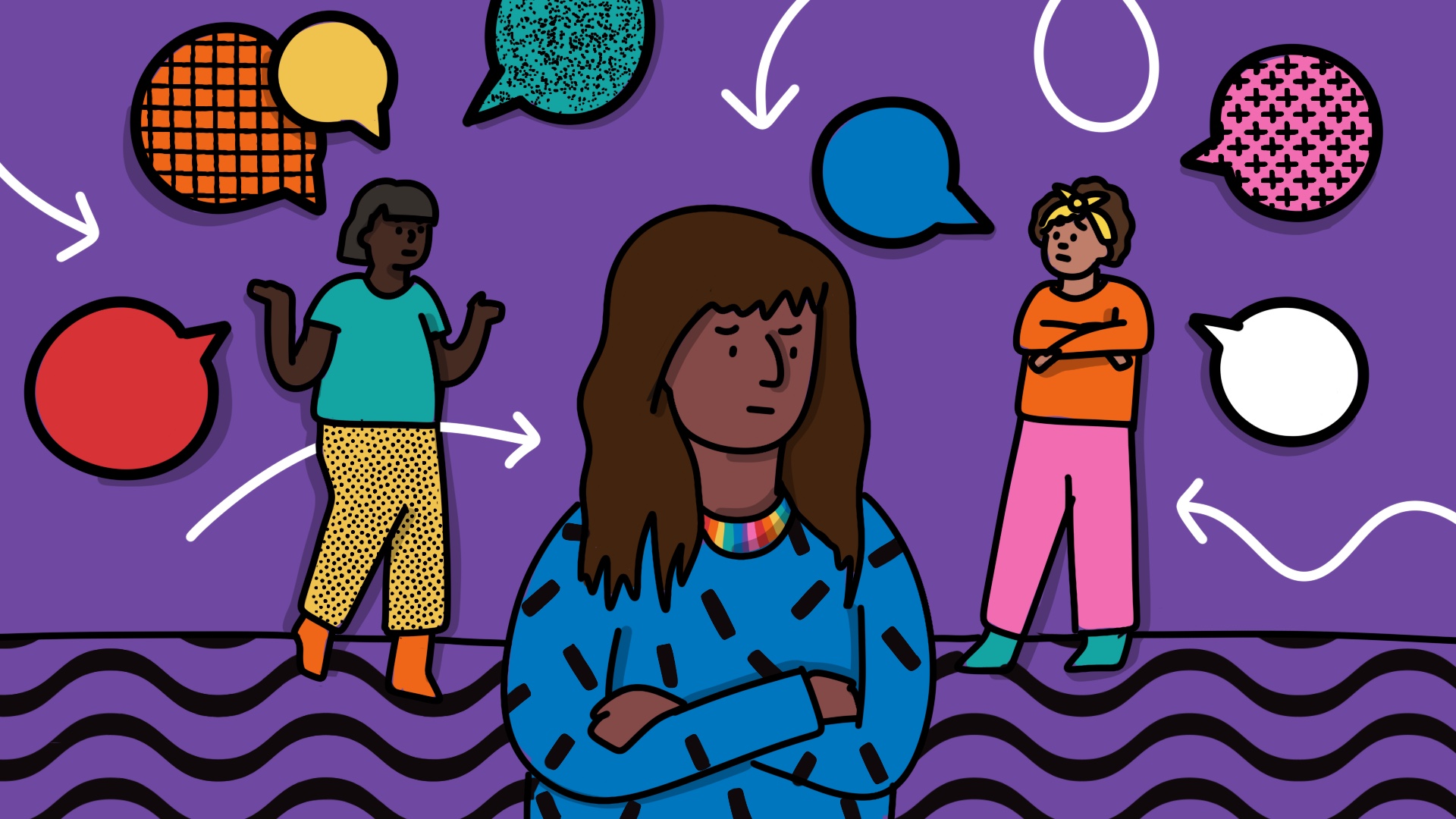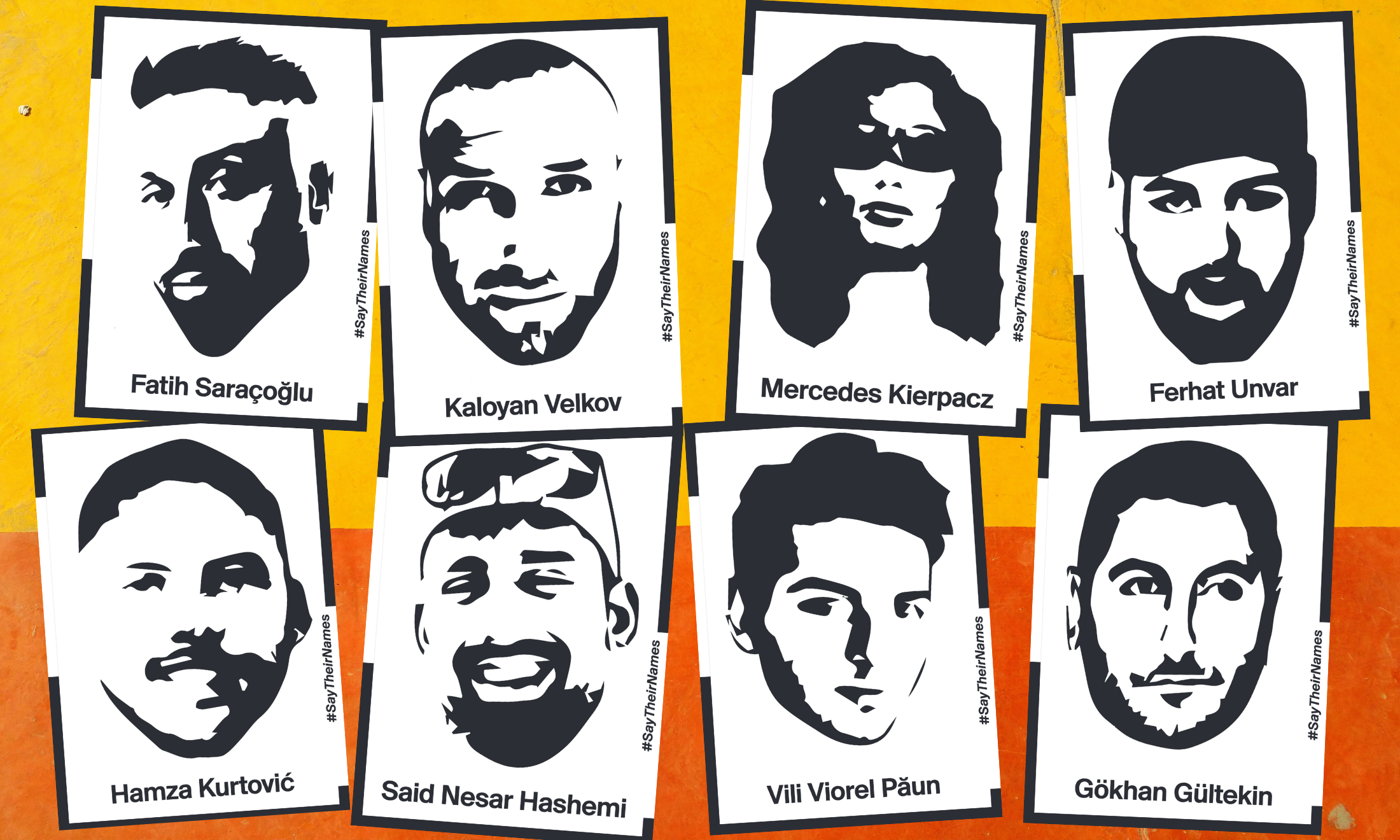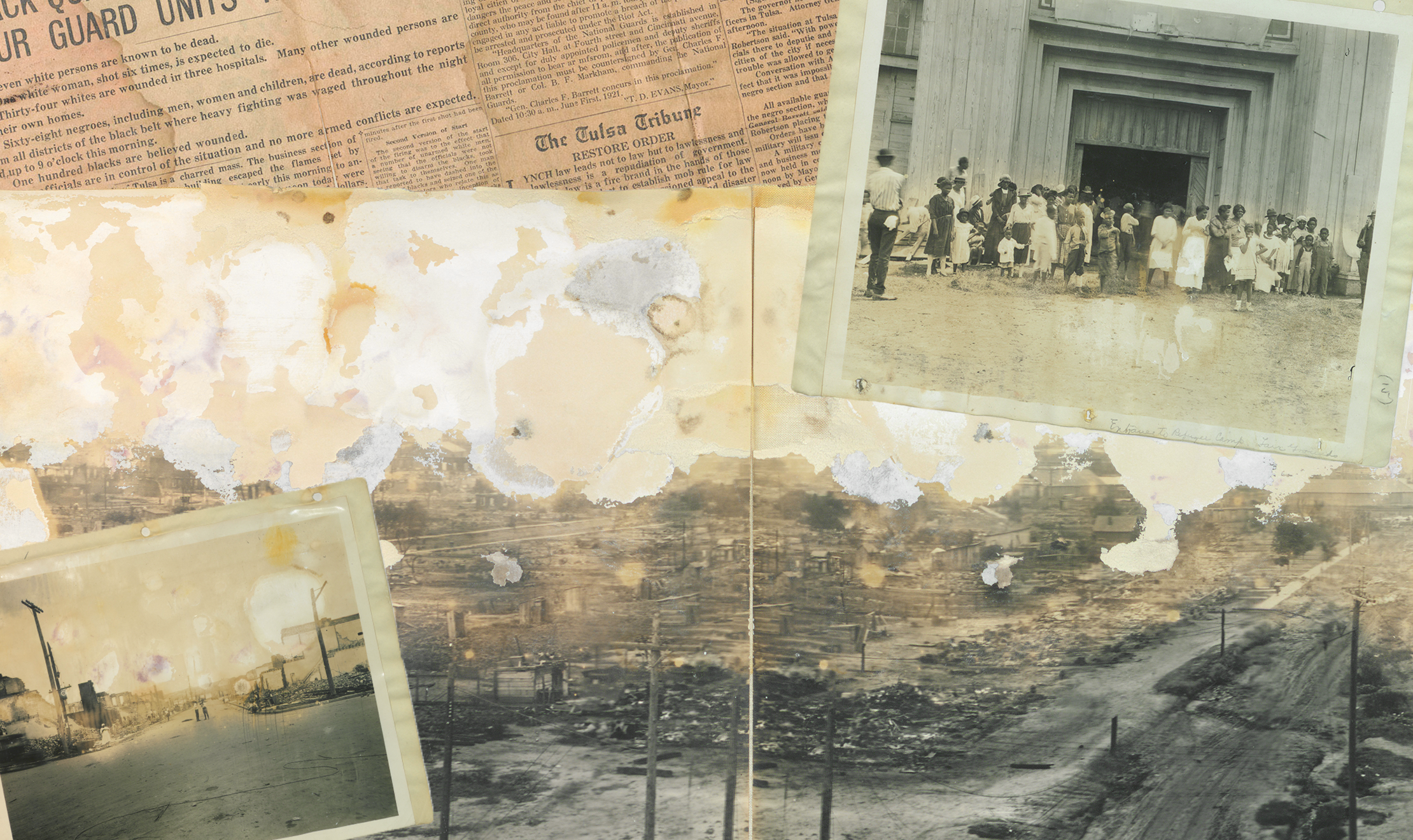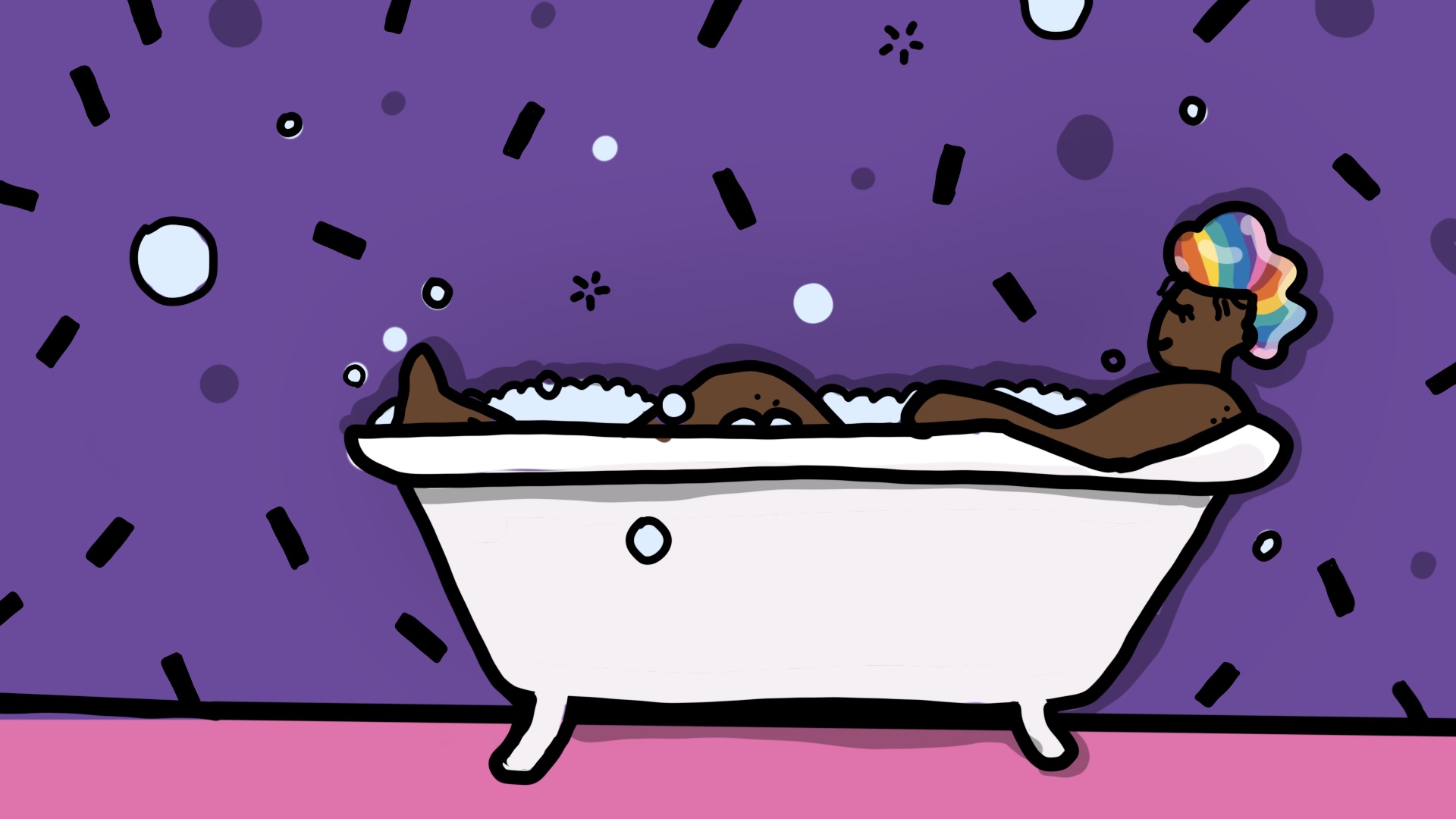
Sometimes I shave my legs and sometimes I don’t; Sometimes I comb my hair and sometimes I won’t; Depend on how the wind blows I might even paint my toes; It really just depends on whatever feels good in my soul (India Arie, Video. 2002)
I was 12 or 13 when I first noticed that I had a moustache, ugly black baby hairs resting on the light brown skin under my nose – what a drag. I bought some hair removal cream and set about resolving the issue. Looking in the mirror I was both amused and horrified by the yellow-white smear across my upper lip, the stench of egg and metal and the tingling. I left it on a little longer than was recommended at the behest of some sort of internal guidance system which already knew that the rules were not written for me. I left it on after the tingle became a sure burn because I knew already that pain was inherent in womanhood. I scrubbed the skin with a towel after I finally washed the cream off, until it was no longer brown, but red, swollen and hairless. I rose the next morning with a purple-brown crust where the fluff used to be, a rainbow-shaped scab that hurt when I moved my face. I remember rationalizing that this was better than having hair there, and crept out of the house to catch the bus to school. Later that day, my form teacher, a slight, dreadlocked white woman for whom I had made a copy of Ms Dynamite’s debut album earlier that week, cornered me in the playground.
“What happened to your lip, Aisha?”
“Nothing.” I was shocked by how tense my small body became, how hard my eyes were. My face was burning, this time with humiliation.
“I could guess?” she offered. That sounded like a fun game.
“Well don’t.” I walked away quickly into a sea of white hijabs and grey polyester trousers.
At my East London girls’ school, populated almost entirely by children of the Bangladeshi diaspora, we were weeding together in near silence, our bodies united by sweat, shame, desire and respectability. This silence would be punctured rarely and magnificently; that PE lesson in 2003 when Halima rolled her tracksuit bottoms to the knee, revealing a single, shining, hairless leg that we all took turns to feel in the queue for the hobby horse. The fateful afternoon when Layla, one of the bullies, locked me in a classroom and said she would only let me out if I told her where I get my eyebrows done. The first time I shaved my torso and brought it to school like show and tell, peeking from underneath my acrylic jumper, a little moon.
When I was 19 I had my first relationship with a perfectly handsome and squat white man. I would watch him each morning as he woke up, rubbed a hand over his face, and ran to a lecture, feeling, and indeed looking, perfectly acceptable to the world. What freedom was this? It was around then that I really dug into my obsession with body hair (from the scalp line, down), and soon after, its intersection with mental health, queerness and race. I often describe it as an obsession, not to mark it out as a strange kook, a niche subject or an attempt at self-deprecation, but rather because the body hair obsession is a simple fact. We are all obsessed with body hair because we have no other choice. But so often it is not a creative obsession, it is one characterized by control of ourselves and others, psychological and physical elimination, self defense. I don’t care what people do with the hair on their bodies, but it really fucking bothers me that our choices are so limited – that something so personal and abundant is up for grabs. It is not just the hair on our heads the white hand wants to touch, and it is not only the physical touch we must be wary of.
The body hair focus in my work is central to my study of the mental health impacts of micro-aggressions. Body hair, for many of us, is a constant micro-aggression, attacking us from within, no matter how many times we rip it out from the root no matter how much we convince ourselves that it’s really not that deep. It exists as a mental burden, particularly for femmes, transgender and black and brown people because our stakes are always, always higher.
If we know, generally speaking, that western body hair norms and rituals are oppressive, and that the “choice” to rebel against them is stressful, then how is that same stress felt by a black person who is already navigating white supremacy on a daily basis? How is it felt by a brown person who has been taught respectability as a tool of individual and group survival? If hair removal is so deeply associated with being clean, pure, fair and lovely, how does that feel for those of us who live in fear of becoming the “dirty pakis” or “terrorists” or “monkeys” or “scum” that we have heard about? What are we reinforcing every time we shave? What are we saving ourselves from, what are we trying to be, what are we locking in? If body hair is used to police our gender, what does non-binary body hair look like? Where is liberation found in having and removing body hair? When does body hair feel good and how can we teach that to our children?
My art is a holy place of experimentation and imagining. It is fun and cathartic to make, and is a reminder to me and maybe others that body hair is not only a site of sadness, but one of subversion, resilience, challenge, beauty and joy – regardless of what we choose to do with it. I collaborate with and include only black and brown, queer and trans people because I can, and as a means of escape from a life spent explaining and reacting to whiteness. One of the things I love about working with body hair is that to some extent, everyone has got it. Everyone has a relationship to it, everyone has a story, and no matter how dubious or defensive people may be at first, everyone wants to tell it. It is somewhere between these survival stories, these bodies, these histories and these experiments that there is a freer freedom, a choosier choice, a less cluttered headspace, a body that just is. This is where I find my peace for the time being.
All imagery by Aisha Mirza. You can see more of her work at aishamirza.net

